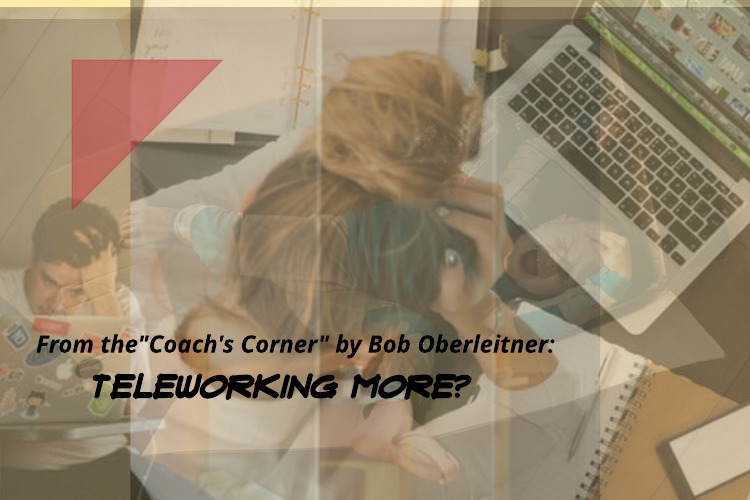Bob Oberlietner, Executive Coach for Federal Employees, Writes About Challenges of Teleworking More

It is likely that as you read this, you or employees that work with you, are among the many federal workers who are teleworking more in recent weeks than ever before. Current events have required us all to make adjustments to our work routines.
Telework is an effective and productive way for both employees and employers to get work done. A study by Stanford University in 2015 showed a productivity increase of a full day’s work taking into account work and cost savings. Workers generally took fewer sick days, shorter breaks, and put in more hours when not having to account for their daily commute. Gallup research data shows 54% of workers indicated they would leave their job for another that provided some form of telework.
Teleworking more than a workforce is used to is not without challenges as some full-time teleworkers over time report feelings of isolation due to extended periods without in-person co-worker interactions. How does a leader manage this?
In a telework environment, it is important for managers to make a point to reach out and connect with employees who are working virtually. It can be easy to get lost in the workload and forget them. In a mixed workforce (some teleworking and some in person) be particularly cognizant of including remote employees in discussions and decisions.
During meetings with a virtual component, be sure when asking for input to specially ask for any comments from those on-line. When at all possible, conduct meetings with remote workers using videoconferencing. Video allows all meeting participants to see and pick up on visual clues (e.g. facial expressions and body language) in the meeting. Additionally, people are more likely to voluntarily participate if they know the rest of the group can see them. If you are running the meeting, make a note to look for those who may be virtually raising their hand on a video conference call.
Meetings scheduled back to back to back can be particularly grueling for virtual workers. Consider shortening meetings to 25 and 50 minutes to allow employees, and yourself, time to get up from the computer screen, stretch and refocus.
Meetings scheduled back to back to back can be particularly grueling for virtual workers. Consider shortening meetings to 25 and 50 minutes to allow employees, and yourself, time to get up from the computer screen, stretch and refocus.
Time will tell if federal agencies will continue to invest in the flexibilities and capabilities of telework. With practice, the right tools, and awareness of managers leading virtual meetings federal agencies will benefit from the advantages of a workforce that has the teleworking capability.
The "Coach's Corner" Articles are written by Robert Oberleitner, executive coach. Raymond James is not affiliated with and does not endorse the opinions or services of Robert Oberleitner.

